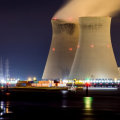Nuclear energy is one of the safest sources of energy in the world, and there have only been two major accidents at nuclear power plants. Despite this, many people are still concerned about the potential health effects of a nuclear meltdown. In this article, we'll explore how often nuclear meltdowns occur, what their impacts are, and how to prevent them. Immediate health effects for the general public would not be expected from an accident at a nuclear power plant. This is because the amount of radiation present would be too small to cause immediate injury or illness.
However, there is a risk of long-term health effects such as cancer developing many years after exposure. Studies conducted by the World Health Organization have concluded that the health effects of nuclear accidents from radiation have been very small. The most serious nuclear accident occurred on April 26, 1986 at the Chernobyl nuclear power plant in Ukraine (then part of the Soviet Union). To prevent a post-accident nuclear reaction, measures have been taken such as adding neutron poisons to key parts of the basement. In a modern reactor, a nuclear fusion, whether partial or total, must be contained within the reactor containment structure. The American Nuclear Society has commented on the TMI-2 accident, that despite the melting of approximately one third of the fuel, the reactor vessel itself maintained its integrity and contained the damaged fuel.
If an accident occurs at a nuclear power plant, heat and pressure build up and steam, along with radioactive materials, can be released. The main impacts of nuclear accidents were not caused by radiation exposure, but were due to psychological and socio-economic factors resulting from misconceptions and fears about radiation. Despite encouraging countries to report nuclear accidents, the International Atomic Energy Agency (IAEA) makes INES information public only for 1 year after its publication. A more detailed analysis of the probabilities of nuclear accidents requires more transparency on the part of the IAEA. To ensure safety and prevent future accidents from occurring, measures must be taken to increase transparency and provide more detailed information about potential risks. The VHTR is expected to be prototyped and tested at the Idaho National Laboratory within the next decade (starting in 200), based on the design selected for the Next Generation Nuclear Power Plant by the United States Department of Energy. Overall, while there is always a risk associated with any form of energy production, nuclear energy is one of the safest sources available.
With proper safety measures in place and increased transparency from IAEA, we can ensure that future accidents are prevented and that any potential risks are minimized.






